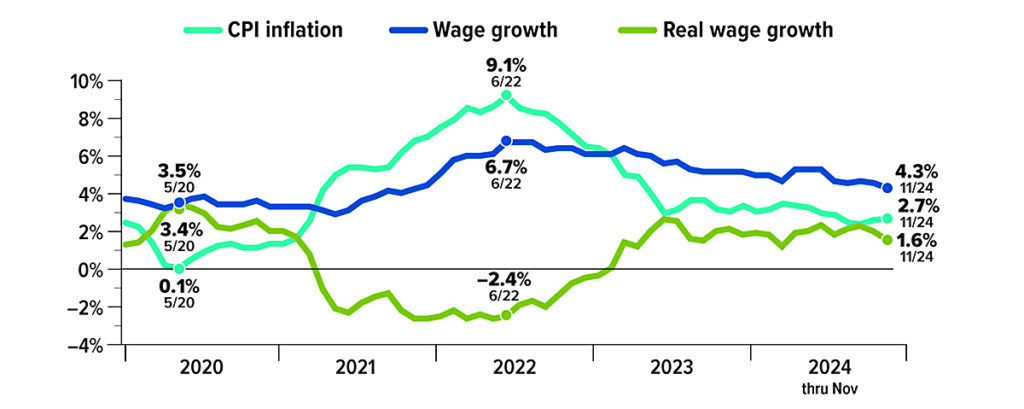Wages rose strongly with inflation beginning in mid-2021, but the pace of price increases was faster than wage increases, leading to a loss of buying power despite higher income. Real wages — adjusted for inflation — actually declined during this period. For example, at the height of inflation in June 2022, wages increased at an annual rate of 6.7%, but real wages declined by 2.4%.
Inflation has dropped dramatically since then, while wage growth has cooled more slowly, leading to solid gains in real wages. If this trend continues, it could help keep the economy strong as workers catch up from the hardship of high inflation and benefit from increased income in relation to the cost of living.

Sources: Federal Reserve Bank of Atlanta, 2024; U.S. Bureau of Labor Statistics, 2024. Wage growth is calculated by comparing the median percentage change in wages reported by individuals 12 months apart; real wage growth is calculated by subtracting CPI-U inflation from wage growth.


